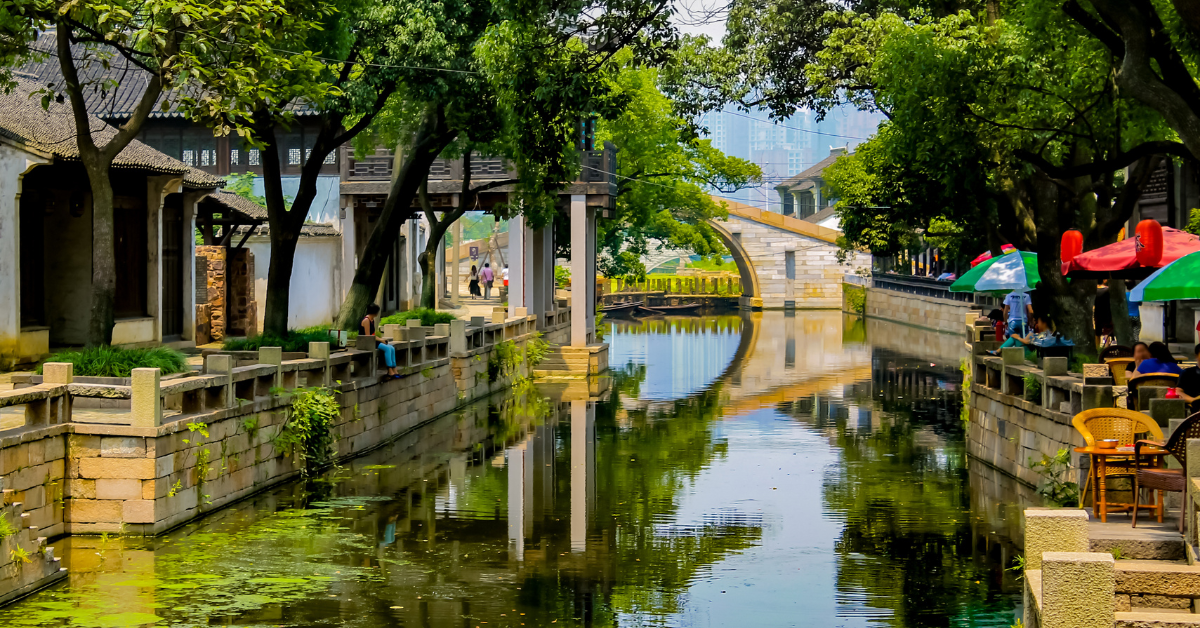Suzhou, a historic city in Jiangsu Province, has long been admired for its beautiful gardens and water towns. For Japanese people, it is both a symbol of Chinese culture and a modern city with a vibrant economy. This article organizes the diverse images Japanese people hold about Suzhou and presents them in a way that is easy for foreigners to understand.
The Basic Image of Suzhou for Japanese People
Suzhou gives Japanese people an impression of being a city where history and nature are harmoniously blended. Its accessibility from Shanghai, only about 30 minutes by train, makes it a convenient and popular destination for Japanese tourists.
In addition, Japanese people are familiar with Suzhou through their education in classical literature, where it often appears in Chinese poetry. In particular, Hanshan Temple is famous from the Tang Dynasty poem “Mooring at Night by Maple Bridge,” and this literary connection reinforces Suzhou’s image as a “cultural capital.”
Summary of Basic Impressions
| Aspect | Impression among Japanese people | Examples |
|---|---|---|
| History and Culture | A symbol of classical China | Chinese poetry, Tang poetry, Hanshan Temple |
| Scenery | Harmony of water towns and gardens | Canals, white-walled houses |
| Spirituality | Sense of beauty and tranquility | Classical gardens, traditional arts |
| Affinity | Resonance with Japanese culture | Similarities with Japanese gardens |
Gardens and Water Towns as Healing Landscapes
For Japanese people, Suzhou’s gardens are a highlight. The Humble Administrator’s Garden and the Lingering Garden are UNESCO World Heritage sites, praised for their fusion of nature and human design. Compared to Japanese gardens, Suzhou’s are more dynamic and varied, leaving Japanese visitors with the impression of “a place that offers both serenity and vitality.”
Suzhou’s water towns also evoke “nostalgia” for Japanese visitors. Taking a boat ride through the canals provides a unique escape from the hustle and bustle of urban life, creating a sense of special tranquility.
Comparison of Japanese and Suzhou Gardens
| Aspect | Suzhou Gardens | Japanese Gardens |
|---|---|---|
| Spatial Design | Complex and circuit-style | Static and simple |
| View of Nature | Dynamic use of water and stones | Stillness expressed with moss and sand |
| Impression | Lively and varied | Quiet and meditative |
Suzhou as a Modern City in Japanese Perception
Suzhou is not only historical but also rapidly modernizing. The Suzhou Industrial Park, with its skyscrapers and shopping malls, represents “a futuristic city” in the eyes of Japanese people. It is seen not only as a tourist destination but also as an important hub for business.
With many Japanese companies setting up offices, Suzhou feels familiar to Japanese expatriates. The presence of Japanese restaurants and supermarkets adds a sense of comfort. For Japanese people, Suzhou is regarded as a “city of trust in both culture and economy.”
Modern City Appeal
| Aspect | Characteristics | Japanese Evaluation |
|---|---|---|
| Economy | Hub for foreign companies | Abundant business opportunities |
| Lifestyle | Availability of Japanese food and services | A reassuring living environment |
| Transportation | Easy access to Shanghai | Convenient for travel and business |
Suzhou’s Sporting Side
Suzhou also presents itself as a sports city. It hosts international tournaments such as table tennis and badminton, sports that are very familiar to Japanese people. These events attract Japanese visitors not only as tourists but also as sports fans.
The city has well-developed facilities for soccer and basketball, with residents actively participating in sports. For Japanese people, these scenes enhance the impression of Suzhou as a “healthy and energetic city.” Marathons are also held here, and Japanese runners sometimes take part, adding a personal connection.
Sports Appeal of Suzhou
| Type | Example | Japanese Interest |
|---|---|---|
| International Tournaments | Table tennis, badminton | Visits for sports spectating |
| Citizen Participation | Marathon events | Joining as runners |
| Everyday Sports | Soccer, basketball | Experiencing the city’s vitality |
Popular Tourist Spots Among Japanese Visitors
Japanese tourists in Suzhou enjoy a variety of destinations, ranging from historical landmarks to modern facilities.
| Spot | Features | Reason for Popularity among Japanese |
|---|---|---|
| Humble Administrator’s Garden | UNESCO World Heritage garden | Similarities with Japanese gardens |
| Hanshan Temple | Famous from Tang poetry | Experience of history and literature |
| Zhouzhuang | Ancient water town near Suzhou | Nostalgic townscape |
| Suzhou Museum | Designed by I.M. Pei | Blend of modern and traditional architecture |
| Suzhou International Expo Center | Large-scale venue | Sports and exhibitions attract visitors |
Conclusion
For Japanese people, Suzhou is at once a “city of history and culture,” a “city of natural beauty and healing,” a “modern international city,” and a “sports city.” Its gardens and canals provide peace of mind, its modern cityscape inspires energy, and its sports events showcase vibrancy.
For foreigners visiting Suzhou, understanding these diverse Japanese perspectives can help uncover even deeper layers of the city’s charm. Suzhou is not just an ancient city; it is a place where culture, nature, economy, and sports all converge, making it one of the most distinctive cities in modern China.






